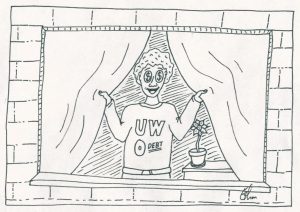[media-credit id=276 align=”alignleft” width=”300″] [/media-credit]
[/media-credit]
Between work, campus organizations and socializing, students are hard pressed to fill each semester with over 12 credits. However, interim classes allow students to increase their credit hours each semester without getting overloaded.
Interim is a three-week-long session that is offered after the regular fall semester in January and also after the spring semester in May. The classes offered during interim are often general education classes, but there can sometimes be short study abroad programs as well. These standard 14-week classes are compressed down to three weeks so that each day of class is the equivalent of a week during the semester.
Since the classes have to cover 14 weeks worth of material in three weeks, each class period usually lasts about three hours each day. However, this can change depending on the class.
Since interim is included in the total credits you sign up for each semester, there’s no point in not taking advantage of it. Although, between the regular semester and interim the total credits have to stay under 21 in order to not have a tuition increase, and students can only take up to six credits during interim.
The dorms and dining halls stay open over break, so even without taking a class students are free to stay on campus.
There are many colleges within Wisconsin that charge students extra or limit the number of credits a student is allowed to take during interim. UW-Milwaukee not only limits students to up to three credits during interim, but those credits will add an extra fee to the regular tuition cost.
UW-Milwaukee’s ‘Winterim’ can cost in-state students up to $1,011.39 and out-of-state students up to $2,421.30.
UW-Whitewater limits students in a similar fashion, and they are only allowed to take one class during interim. Their interim for undergraduate students costs much less than UW-Milwaukee’s interim but can still add up to $957.72 to in-state tuition.
Senior Ryan Thomas said he enjoys interim classes, especially those that are about interesting topics.
“I dig it,” Thomas said. “Especially if a class isn’t super hard or boring.”
Even with how nice UW Oshkosh interim is, it is not without its faults. Senior Chelsea Phillips said there are only a few select classes open during interim and the classes move at an accelerated speed.
“I actually like [interim],” Phillips said. “It’s nice to be able to take a class that’s only three weeks long. A couple downfalls would be the fact that it’s a 14-week course shrunk into three weeks. Another downfall is that not every class is available for interim.”
More class offerings would allow for more students to be able to participate in interim classes after their general education classes are completed. Phillips also said the difficulty between the regular semester and interim is similar but can feel different because of the time crunch.
“I think [the rigor] is about the same,” Phillips said. “It seems more difficult during interim because you don’t have as much time to complete the assignment [or] project.”
However, the perks of interim outweigh the disadvantages. With only taking one or two classes, there is much less homework to worry about, so it’s less stressful, there’s fewer people on campus so it’s very peaceful, if a class sucks it’s only 14 days so it’ll be over much quicker and with all the extra time to binge shows it still feels like a break from school.
Still, interim can help students graduate faster and finish their gen. ed. courses much more efficiently. All UWO students should take advantage of interim whenever it’s possible to do so.














